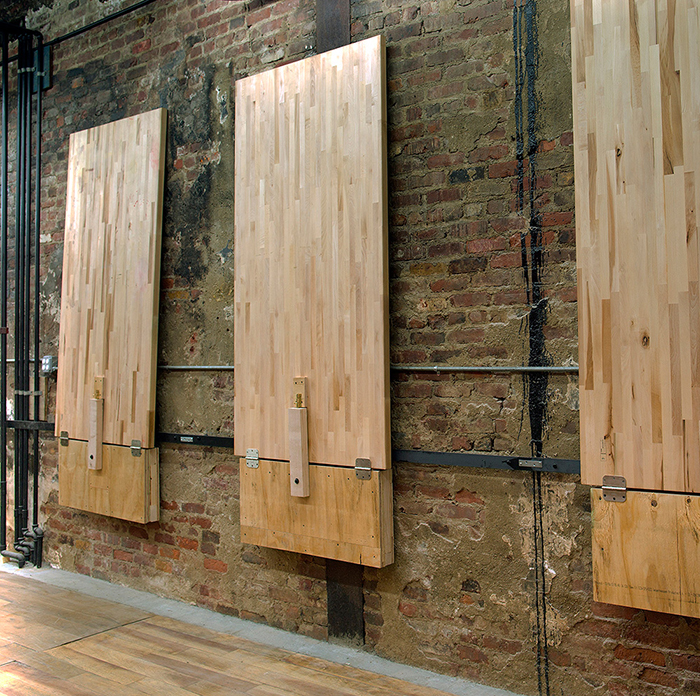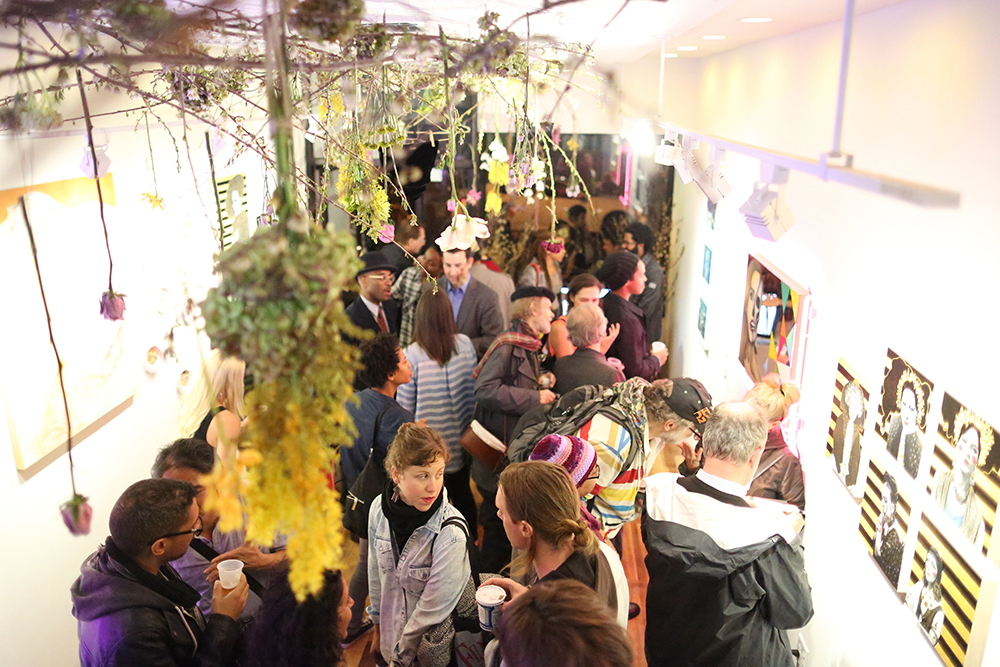“Forcing people to face into the room, not allowing people to work privately, and requiring members to walk past each other, all force moments of active and passive interaction.”—Brian Shevlin
Brian Shevlin: Owner, Con Artist Collective / New York NY
conartistnyc.com
“forcing people to face into the room, not allowing people to work privately, and requiring members to walk past each other, all force moments of active and passive interaction.”—brian shevlin
How is Con Artist a sandbox for collaborative creativity?
We built the space as a large, open, shared venue stocked with a wide variety of resources. Similar to a gym membership, artists and designers can have access to a variety of expensive equipment that they might not typically be able to use or afford. Our space is currently equipped with a 4-color silkscreen press, a light table, a photo studio, professional lighting, a power washer, a drop sink, computers, hardware, software, tools, and other communal supplies.
What is the impact of environment or space on collaboration?
Our architecture firm, 0 to 1, consulted us on how space can encourage community. Through research and experience, we believe that forcing people to face into the room, not allowing people to work privately, and requiring members to walk past each other, all force moments of active and passive interaction. These moments then turn into familiarity and awareness of what other people do, what they are working on, which finally turns into collaboration, and sharing knowledge and resources. We believe this builds a strong connected community. Our name, Con Artist Collective, actually means Connected Artists. The Gallery space is also a venue with regular events and gallery shows. The artists pitch projects for the gallery and form networks by organizing shows and social events together.
Con Artist Collective
architect: 0 to 1; photographer: kanako miyamoto
courtesy of brian shevlin
Con Artist Collective
architect: 0 to 1; photographer: kanako miyamoto
courtesy of brian shevlin
Because NYC is a dense, urban environment where most people don’t own a vehicle, this means that people often frequent their neighborhood establishments, and they get to know their neighbors by regularly seeing each other in local establishments. This frequency of interaction helps build relationships that turn strangers into a community.
Con Artist Collective
architect: 0 to 1; photographer: kanako miyamoto
courtesy of brian shevlin
How does a collective function differently than a collaborative?
A distinct aspect of a collective is a shared goal or agenda, however collectives might usually have members contribute to some projects and not to others. Members take turns leading and organizing collaborative projects. Collective efforts often act more like an organization, placing people in defined roles to actualize a project. When that project is over, the organization is often dissolved or redefined for another project that may or not be related in any way. I think that a collective is a more organic, shapeshifting kind of collaborative.




